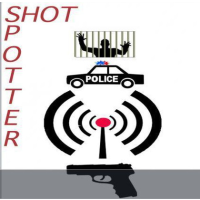Silicon Valley High School Is First in Nation to Install a Gunshot-Detection System

In a grim measure of fear in an America armed to the teeth, a California high school is the first in the nation to purchase a gunshot-detection system.
Newark Memorial High School, in Silicon Valley, installed a surveillance microphone system from ShotSpotter that alerts the authorities when a gunshot has been detected. Sensors are stashed around the school, inside and out, and the system will be operational when kids return to school in the fall.
Any sound registering on the system as a gunshot is sent to analysts who can then forward information, like the number of shots fired and the location, on to law enforcement and the school. The company says the system does not suffer false positives, effectively distinguishing between different kinds of gunfire and noise like car backfires and slamming doors.
Then again, there is no information available that the system has ever been tested in a technologically advanced environment with a lot of smart kids who might find spoofing ShotSpotter great sport.
Newark is a fairly safe Silicon Valley community by conventional standards, but statistics don’t necessarily correlate with risk aversive fear factors. Newark Unified Superintendent Dave Marken told the Contra Costa Times, “Unfortunately, we have an increase in deranged individuals who go into campuses, churches, malls and theaters with one thing in mind: to create as much carnage as possible.”
The system is used mostly by law enforcement and mostly outside in 90 cities, including Oakland, Richmond, San Francisco, East Palo Alto and Redwood City in the Bay Area. The only other educational campus that uses ShotSpotter is the Savannah College of Art and Design in Georgia.
No precise information on the cost to Newark was available. The school board reportedly didn’t vote on the purchase, leaving the decision to the superintendent, because it was less than $20,000. Marken said it cost less than the school’s fire alarm, a few thousand a year.
ShotSpotter debuted in Washington, D.C., in 2005, where the FBI and a $2-million federal grant helped set up sensors in a pilot district plagued by poverty and crime. D.C. was selected because it led the nation in homicides.
The Oakland Police Department, wracked by cuts in its 2007-08 budget, still managed to spend nearly $500,000 on ShotSpotter. A report by City Auditor Courtney Ruby in 2012 said that the little-used system was a waste. The department did not have the computers or dispatchers to handle the system and the auditor noted “inconsistent alerts resulting from non-gunshot noise recordings.”
But it was hoped that an $84,000 upgrade in 2011 would improve things. Oakland spends $264,000 a year on the system.
Tammerlin Drummond, a columnist for the Oakland Tribune, wrote in May that she couldn’t find any independent analysis of ShotSpotter’s effectiveness other than the company’s own data. Future studies might also take a look at privacy issues raised by the American Civil Liberties Union (ACLU).
Although the company says snippets of sound recorded are too short for use as surveillance of individuals, some of the audio has been used in court to help identify people’s voices during shooting. The ACLU is not convinced a network of surreptitiously placed microphones, with data stored for unspecified times and accessible by who knows who, is a great idea.
–Ken Broder
To Learn More:
High School Installs Microphone System to Detect Gunfire (by Chris Matyszczyk, C/NET)
Newark High School Gets Gunfire-Detection System (by Jenna Lyons, San Francisco Chronicle)
Newark Adds ShotSpotter Gunfire Detection System to High School Campus (by Chris De Benedetti, Contra Costa Times)
California High School Installs Security System to Pinpoint Gunfire (by Dante D'Orazio, The Verge)
Budget-Strapped Oakland Spent $1.8 Million on Unusable Police Equipment While Laying Off Cops (by Ken Broder, AllGov California)
- Top Stories
- Controversies
- Where is the Money Going?
- California and the Nation
- Appointments and Resignations
- Unusual News
- Latest News
- California Forbids U.S. Immigration Agents from Pretending to be Police
- California Lawmakers Urged to Strip “Self-Dealing” Tax Board of Its Duties
- Big Oil’s Grip on California
- Santa Cruz Police See Homeland Security Betrayal in Use of Gang Roundup as Cover for Immigration Raid
- Oil Companies Face Deadline to Stop Polluting California Groundwater





